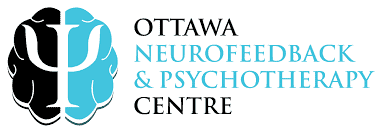Many people don’t really know about body-focused repetitive behaviours (BFRBs) and often mistake them for OCD. BFRBs refer to a group of mental health disorders commonly linked to repetitive self-grooming behaviours that actually result in physical damage to the body.
Skin-picking disorders, hair-pulling disorders, and nail-biting disorders are among the many forms of BFRBs, and these can all lead to significant distress, physical harm, and functional impairment among those who suffer from them. BFRBs must be taken seriously and given a proper treatment plan by healthcare professionals.
Understanding Body-focused Repetitive Behaviours
As explained above, body-focused repetitive behaviours or BFRBs are an umbrella term for a group of mental health disorders that have one thing in common: repetitive and compulsive self-grooming behaviours that cause physical harm.
These repetitive behaviours are done either consciously or otherwise, and some notable examples include picking at skin, pulling hair, biting nails, or biting the inside of the cheeks. But note that BFRBs are different from normal grooming habits like brushing your teeth or shaving your underarms and legs, because BFRBs cause physical damage to the body.
Symptoms of Body-focused Repetitive Behaviours
Depending on the type of disorder, the symptoms of BFRBs may vary. However, there are common symptoms that show up in most types of BFRBS, and these include:
- Repetitive and compulsive behaviour that you find too difficult to control
- Feelings of tension or anxiety arising before engaging in the behaviour
- Pleasure or relief when you’re engaging in the behaviour
- Visible signs of physical damage to the body (scarring, hair loss, or skin irritation, among others)
- Social or functional impairment, like difficulty completing tasks at work or school due to the behaviour
Clinical Types of Body-focused Repetitive Behaviours
It’s important to note that BFRBs exhibit similar underlying mechanisms that are related to sensory gratification and emotional regulation, so it’s necessary to understand the different clinical types of BFRBs.
The main job of therapists is to tailor treatments effectively for those with BFRBs while also emphasizing addressing emotional health concurrently with behavioral modification strategies. Meanwhile, these are the clinical types of BFRBs:
- Trichotillomania (Hair-Pulling Disorder): This can be described as the recurrent pulling of hair from the scalp, eyebrows, eyelashes, or other body parts where hair grows, which results in noticeable hair loss, significant distress, or even impairment.
- Skin-Picking Disorder (Excoriation Disorder): This condition refers to the recurrent picking of the skin, which leads to skin lesions, scabs, or scars and in turn, significant distress or impairment of those who have it.
- Nail-Biting Disorder (Onychophagia): Lastly, this disorder involves the recurrent biting of nails or cuticles. In turn, it damages the nails, causes nail infections, or even bleeding.
Are BFRBs Mental Illnesses?
Yes, BFRBs are considered mental health conditions, as per the Diagnostic and Statistical Manual of Mental Disorders, Fifth Edition (DSM-5). BFRBs are classified as obsessive-compulsive and related disorders.
This classification is based on the similarities between BFRBs and obsessive-compulsive disorder (OCD), including the presence of repetitive and intrusive thoughts or urges and the need to perform a behaviour to reduce anxiety or distress. But note that OCD and BFRBs are two different conditions.
What Causes Body-focused Repetitive Behaviours?
The cause of BFRBs can’t be tracked exactly, but there are many factors that may contribute to their development, including:
- Genetics: BFRBs may have a genetic component, as studies have found that those with BFRBs are more likely to have family members with the same or similar conditions.
- Neurobiology: Apart from genetics, BFRBs may be associated with changes in brain structure or function, particularly in regions involved in impulse and control reward processing.
- Environmental factors: The environment also plays a role on the child, as stress, trauma, or anxiety may trigger or exacerbate BFRBs, as environmental factors can also include social and cultural norms around grooming and appearance.
- Learned behaviour: BFRBs may be learned through observation or as a coping mechanism for their own emotional distress, as people may start nail-biting after witnessing someone around them do the same as a way of coping with emotional distress like anxiety or stress.

Treatment for Body-focused Repetitive Behaviours
Thankfully, there are treatments available for BFRBs, including therapy, medication, and self-help strategies. The most effective treatment approach depends on the person’s specific symptoms and needs.
- Comprehensive Behavioural (ComB) Treatment: This is a type of therapy that first explores why, where, and how a behaviour is occurring, by focusing on five domains, which are known by an acronym (SCAMP): sensory, cognitive, affective, motor and place. Specific strategies that target the person’s unique patterns of behaviours are implemented using the domains as a guide.
- Habit Reversal Training (HRT): This type of therapy aims for the client to unlearn unhelpful habits. It has four main components, which are awareness training, competing response training, relaxation and maintenance.
- Acceptance and Commitment Therapy (ACT): Understanding a person’s values is a key component of this type of therapy, so clients are taught to react in a different way to their thoughts and emotions, as well as their urges. Meanwhile, mindfulness-based strategies are also employed for assisting clients when it comes to accepting internal experiences, instead of avoiding them.
- Medication: Antidepressants or antipsychotic medications may be prescribed to those ith BFRBs to help reduce symptoms. These medications can help regulate brain chemicals that may be contributing to the disorder.
- Self-help: Those with BFRBs can feel isolated, so it’s good for them to talk to other people with BFRBs so that they feel that they’re not alone. Those with BFRBs are encouraged to join the Canadian BFRB Support Network, the TLC Foundation for BFRBs, as well as Facebook groups for those with BFRBs.
How Archways (in partnership with NuVista Mental Health) Can Help You with Your BFRBs
Archways Centre for CBT, based in London, Ontario, is a psychology clinic dedicated to using evidence-based therapies to provide specialized treatment for those with BFRBs. The therapists at Archways primarily use ComB treatment to work with BFRBs, but they may also incorporate elements of the other approaches to tailor the treatments to each person’s specific needs. Archways’ treatment program includes:
- Comprehensive assessment: Archways’ team of experienced clinicians conducts a thorough assessment to determine the person’s symptoms and needs.
- Individualized treatment plan: Based on the assessment, Archways develops a personalized treatment plan that may include therapy, medication, and self-help strategies.
- Support and education: Archways provides ongoing support and education to those with BFRBs and their families to help them understand the disorder and develop coping strategies.
- Teletherapy: Archways offers teletherapy services, allowing those with BFRBs to receive treatment from the comfort of their own homes.
BFRBs are a group of mental health disorders that involve repetitive and compulsive self-grooming behaviours that cause physical harm. These behaviours often lead to significant distress, physical harm, and functional impairment among those with BFRBs. Fortunately, it can be treated with therapy, medication, and self-help strategies, and the best results can only be achieved with board-certified, highly skilled, and highly trained mental health professionals.
Author Joanna Jeffers, M.A., C.Psych.




